Do you find yourself walking around a steep rock on the trail thinking, “How the heck do I ride down that?”. Have you had the very unpleasant experience of getting thrown forward while trying to roll down a short steep transition? If you answered yes to either of these, this is the skill for you! We present to you – The Roll Down.
The Roll Down is a save-your-you-know-what skill that that can be used on terrain that drops rapidly (up to a certain size – more on that in a moment), and when you want to keep your wheels on the ground. This is a descending skill that is typically done while riding at a slow(er) speed. The Roll Down allows you to stay in control, cool and calm.
Let’s get rolling!
1. Size it up
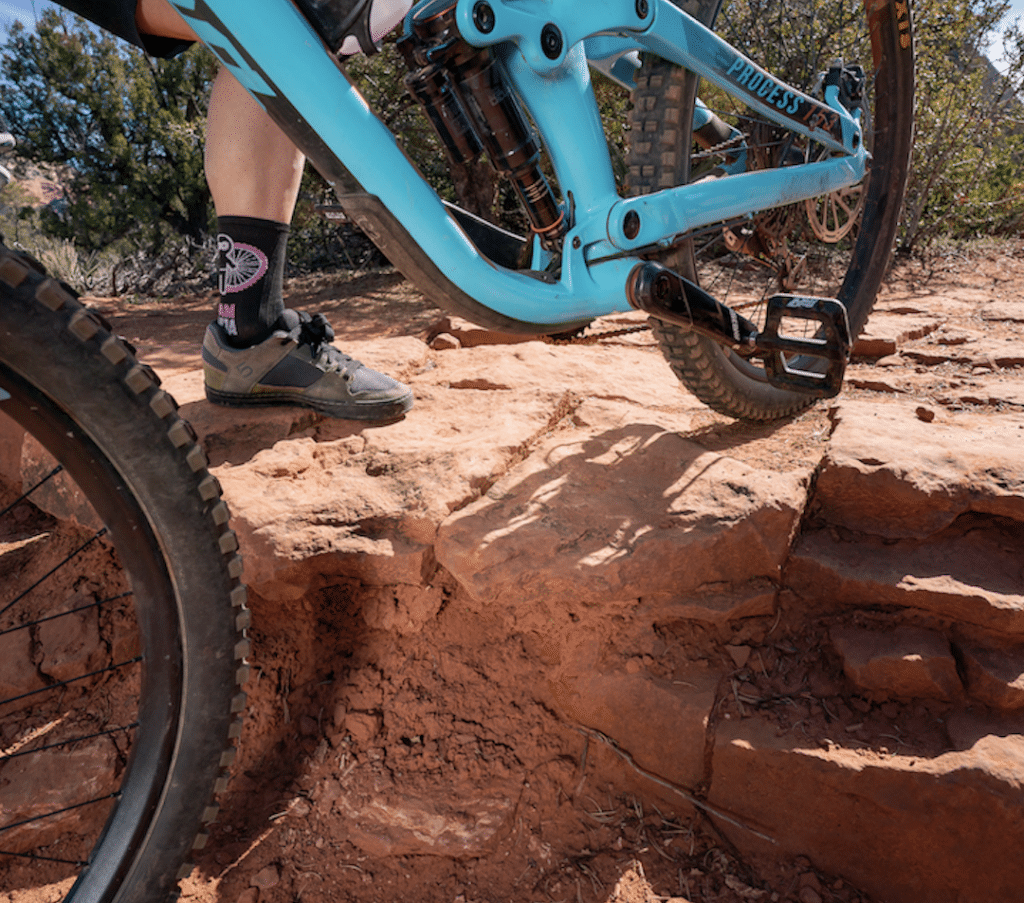
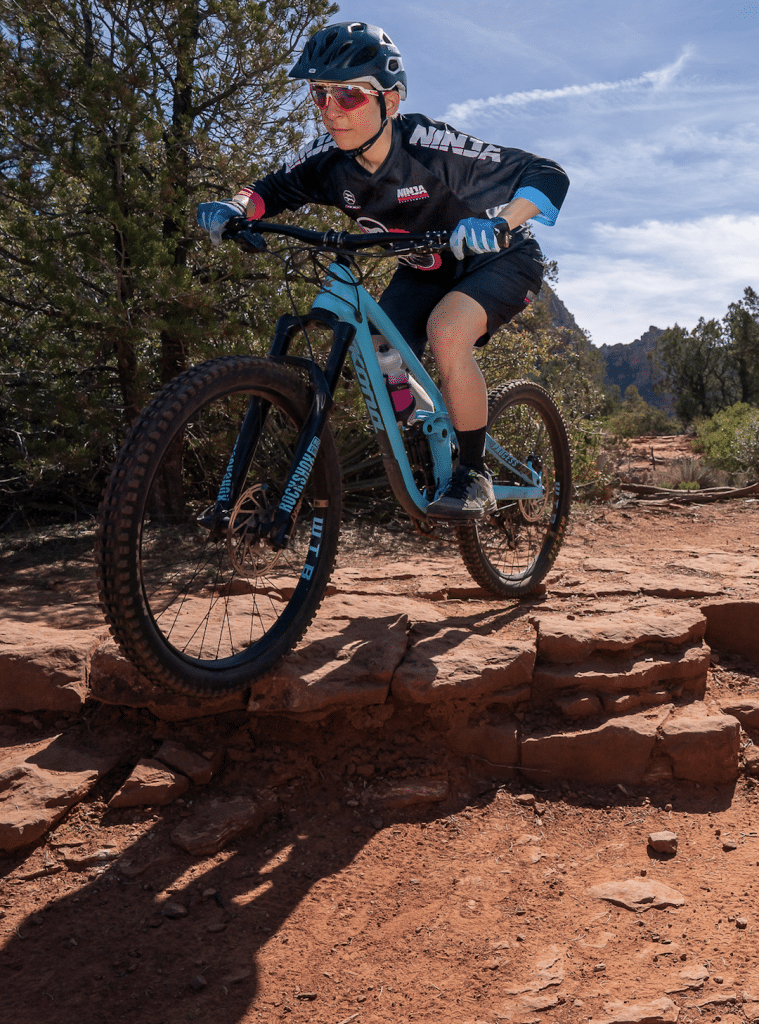
The Roll Down is not a one-size-fits-all skill. There is a limit to where you can use The Roll Down. The Roll Down technique can be used on a steep transition where your chain ring and bottom bracket will clear the obstacle. If the steep transition is too tall, your chain ring may clip the obstacle, hanging up your bike and sending you flying over the bars. The Roll Down is NOT the right tool for the job is we are talking about riding off a 10ft cliff.
To test your clearance and determine if The Roll Down is the right skill for the job, get off your bike and while holding onto your handlebars try rolling it down the obstacle with level pedals (to mimic how your feet will be positioned when riding). Does your chain ring clear the feature? If yes, you’re golden! If not, you are going to want to use a different, high speed skill to ride this feature.
When you first start riding steep transitions, you may want to get in the habit of getting off your bike to check your clearance as described above. Don’t worry, before you know it you’ll be able to “size up” a feature as you approach on your bike so you can flow right over and continue down the trail.
2. Approach
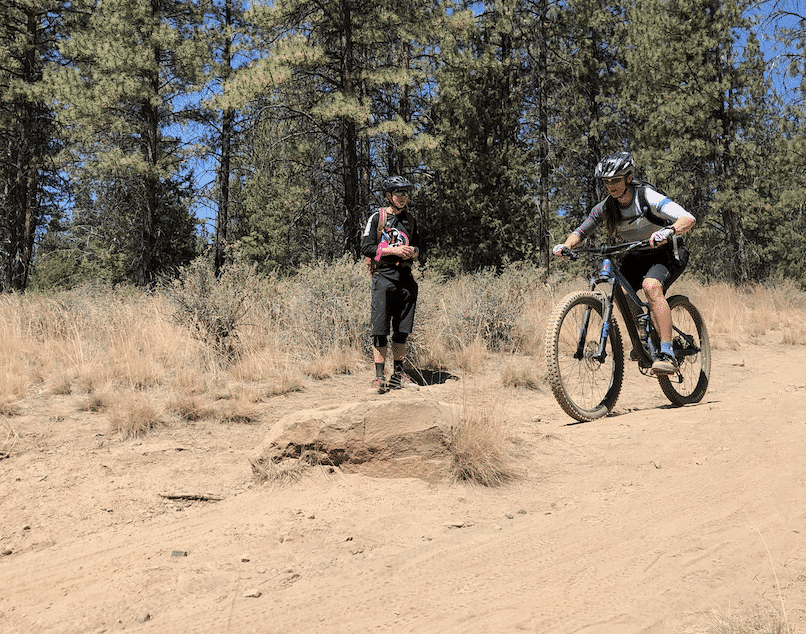
If you see a steep transition ahead on the trail, approach the feature in a ready position at a jogging or walking speed. You’ll want to have your speed set before you reach the transition and you should not be breaking or pedaling as you roll down. Stay relaxed in your ready position and be sure you have even weight in your pedals.
3. Roll Up
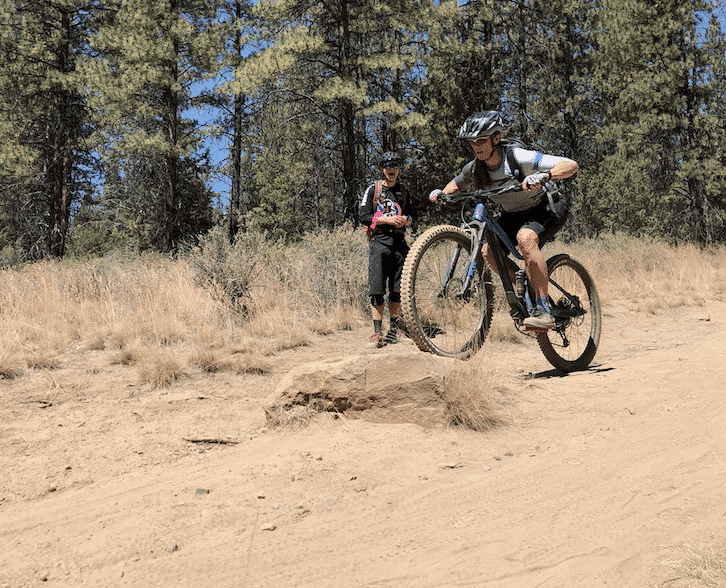
If the transition has a slight step up at the front, be sure to lighten the front wheel to allow it to easily roll onto the top of the object. Being relaxed in the arms and legs is mega-important. Breathe. Breathe. Breathe.
4. Inspect
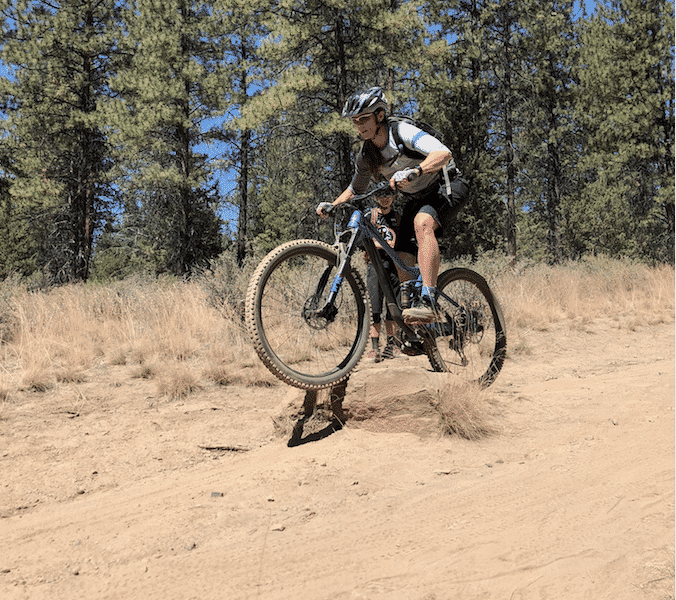
As you reach the top of the transition, raise up into a high ready position to look at the feature – – and look to see what’s on the other side! We sometimes refer to this as the “peak”. Don’t like what you see? This is your last chance to bail. If you do not want to ride the transition, apply your breaks and firmly plant a foot. If all looks good and you are ready to ride the transition, it’s time for the next step – the PUSH!
5. Push
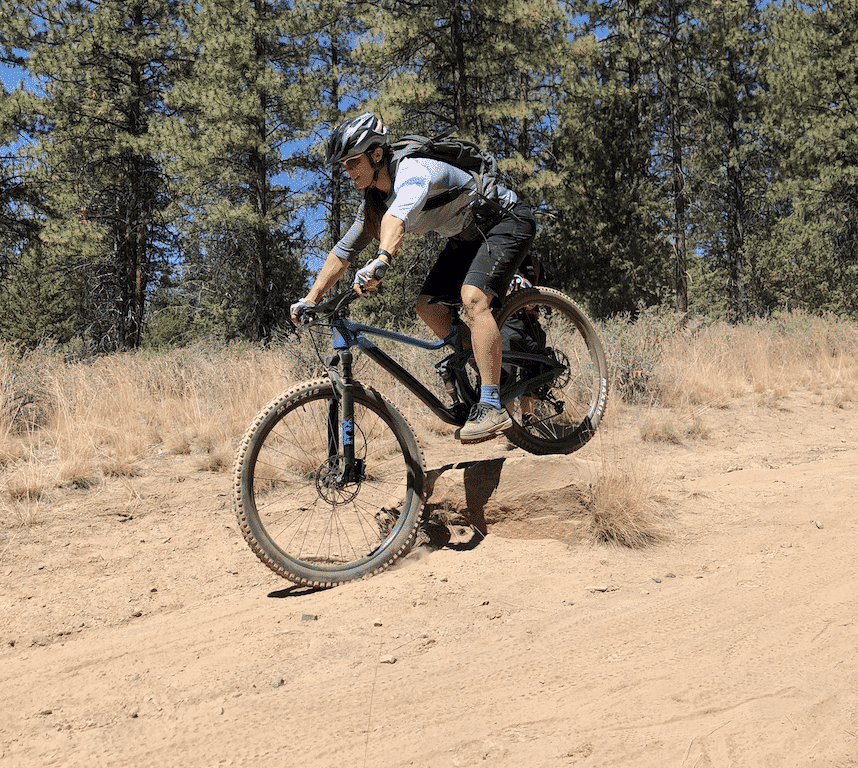
At the exact moment your front wheels start to roll over the transition, push your handlebars down AND forward. You should already be in a high ready position which gives you plenty of range of motion in your arms for this movement. This should be a quick and explosive movement that will push your front wheel forward and down the back side of the rocks while simultaneously allowing your weight to be back behind your saddle. Think of this as you telling your bike exactly where you want it to go – show that bike you mean business!
If you find yourself being pulled down by your front wheel (you’ll feel like a bobble head doll), you need to either push more explosively, or you need to adjust the timing to better line up with the edge of the obstacle.
6. Recover
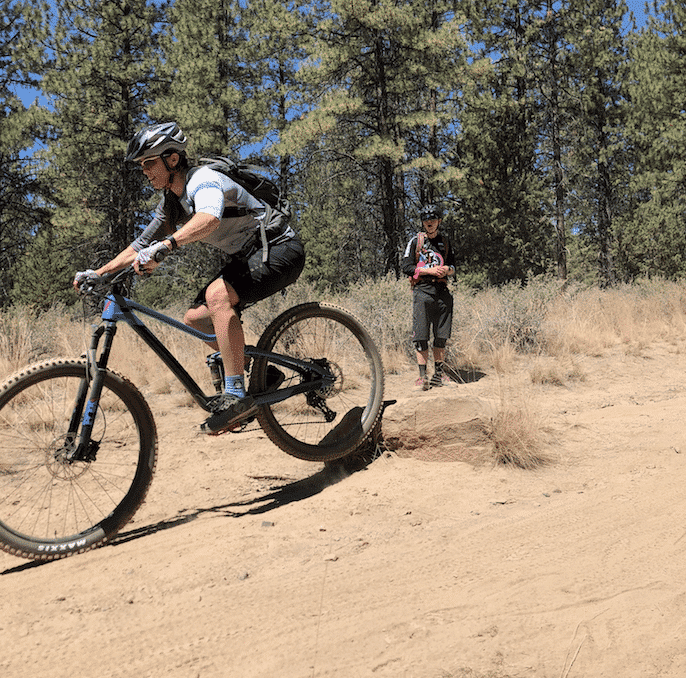
As your rear wheel transitions down the backside of the obstacle, bring your weight forward in order to return even weight to both of your wheels. Keep your head up and looking ahead. This recovery step is SUPER important. If you stay in the “push” position (aft on the bike), your arms would be locked out, preventing you from properly absorbing even the smallest rocks or obstacles on the trail below the drop. You also run the risk of looping over backwards if you don’t quickly recover back to your ready position – yikes!
So there you have it – no more walking around steep transitions or getting caught by surprise. As you learn The Roll Down, start by practicing on something small with a smooth exit such as a curb. From there, build up gradually to larger obstacles. Happy rolling, Ninjas!

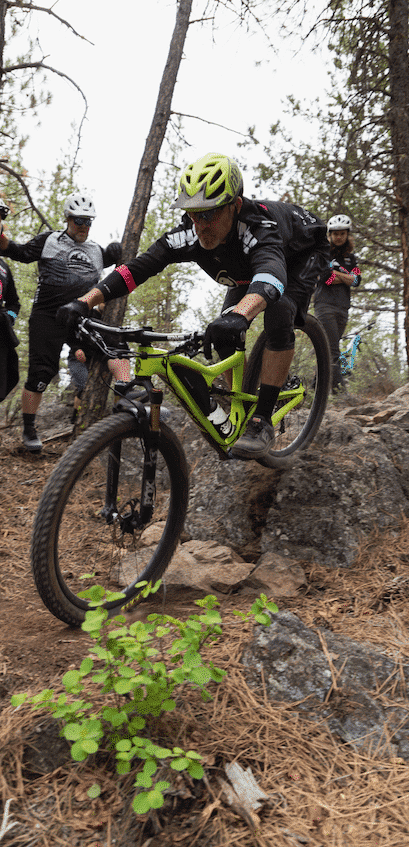
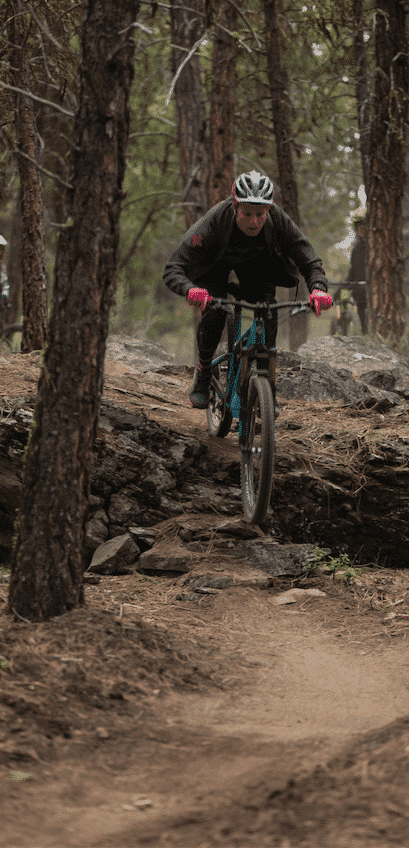
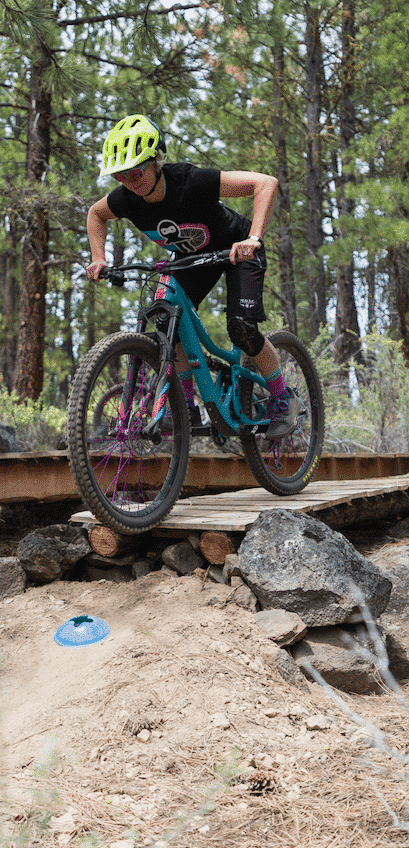
Hi Hannah. It’s great to see you teaching again. 🙂
Aw, thanks! Stoked to be back out there. 🙂
Just a thought when getting off the bike to check chainring clearance. On a dual suspension, when you get back on the bike it will sag a little and may reduce your clearance a little more than you anticipate. I learned the hard way.
I just signed up for DE in October and can’t wait. I can’t tell you how helpful the one I took in Phoenix with Jeremiah, Joanne, and Becky was.
Really good point! Indeed, your bike will be even lower with rider weight so definitely keep that in mind when doing a “roll over” test.
So glad you had a great clinic in Phoenix – we look forward to seeing you on the other side of the country this fall!
Sounds good.
The part I find most tricky is the bottom of the Roll (the transition?).
This is where the max energy from descending the drop hits you, and wants to put you OTB.
You have to brace your arms to counter this force and, presumably still be a little back to send the bike forward BUT you don’t want to get too far back and loop out.
Presumably there are some transitions that are not smooth enough to allow a Roll — that need a technique that lifts the front wheel?
How do you see balancing all this?
Thanks………
Hi Rusty – great questions!
First, it’s important to recognize the difference between riding a steep transition as a roll down (as described in this article) and riding a steep transition as a drop. These are two different techniques.
For the steep transition technique described in this article, it is the “push” (combined with even weight in your feet + good body positioning) that will prevent you from being pulled forward. When done correctly, you should feel completely stable and in control. Sometimes I see riders who make the following mistake: instead of pushing the bike down and forward, the rider instead pushes their body back. When this happens, the riders weight will be too far back and their bike will pull them down. I call this the “bobble-head-effect” when the rider gets a jarring pull down (thanks gravity) and their head bobbles. Proper technique can help you avoid this completely!
There are some obstacles that are too tall for the technique described here. I describe how to determine when a steep transition is too tall under the “Size it up” section above. For larger obstacles, you will likely want to ride it as a drop. Checkout our recent article title How to Ride A Drop: Down and Back Technique (www.ridelikeaninja.com/2020/09/08/how-to-ride-a-drop-down-back-technique/).
Hope that helps clear up your questions!
I ride a trail with about 5 rollable ledges that are tightly spaced on a steep pitch. I always roll them, because I don’t think I could drop one without landing on the next ledge or going too fast. How do you approach this situation? Should I be managing my speed with my rear brake only and just doing the technique in this article over each ledge? There’s basically no time to break between ledges.
In rock gardens, I’m trying to get a read on where to slow down (to avoid getting out of control) and where I can unweight the bike to smooth out obstacles. Please advise. I really enjoyed my intermediate clinic last year!